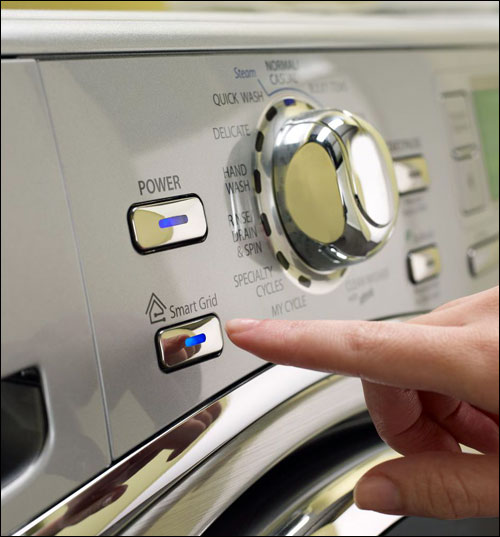A recent story in The Washington Post calls out Whirlpool, and its $1,699 Wi-Fi-enabled smart washing machine, as the poster child for IoT silliness. Yes, the company’s smart washing machine lets owners start it via a mobile phone, as well as assign laundry chores to various family members, and its accompanying app offers up stain-fighting tips.
Post reporter Drew Harwell quoted Chris Quatrochi, Whirlpool’s global director of user experience and connectivity, who told attendees at the recent GigaOm Structure conference that “Trying to understand exactly the value proposition that you provide to the consumer has been a little bit of a challenge.”

One reader of Harwell’s story chimed in with the follow comment: “I’ll be ready to buy a smart washing machine when the machine picks up my clothes, separates the colors from the whites, washes and dries everything, irons when needed, and neatly folds the clothes and puts them where they belong. Until then, I’ll take a block of iron that lasts 50 years, costs $100, and just washes clothes.”
Amen to that. Most of the benefits listed in the article seem superfluous at best, and not nearly worthy of the price premium.
Yet, it seems to me that the real value IoT-connected appliances can provide consumers is linked not to convenience, but rather to the role appliances play in the dwelling’s infrastructure—and, by extension of that, to saving money.
Today, owners of Whirlpool’s smart washer and dryer can set up an online profile, link it to their utility provider and tie the machines’ use into a demand-response program. This way, they can load the machines at any time and then let the “smarts” inside them decide when to turn on, based on the time of day, the demands being made on the grid, and the electricity prices being charged by the local utility. If it’s the middle of the afternoon on a hot day, when energy usage is peaking (and, therefore, new capacity is likely being brought onto the grid—perhaps a coal-powered energy plant will need to be brought online) and kilowatt-hour electricity rates are topping out, your washer and dryer will wait for demand to decrease and rates to fall before powering up.
If you happen to have a Nest thermostat or a home energy-use platform designed to manage multiple smart appliances for the same types of energy-conserving application, all the better.

So why did Whirlpool’s Quatrochi say the value proposition is a challenge? Probably because, frankly, most consumers don’t care about saving a little bit of money on their energy bills—or, at least, not enough to pay the premium on the machines. However, if they could multiply the benefits to this type of optimized energy usage across all appliances within their homes, and manage these various devices from a central controller, then the value proposition suddenly becomes much more compelling.
Of course, this is the vision of the smart home, and there are plenty of manufacturers, software developers and service providers selling a part of the smart home puzzle. So the problem—much bigger than trying to convince consumers that they’ll love being able to turn their washing machines on remotely via their smartphones—is that standards development has not kept pace, and consumers are rightly concerned about committing to installing appliances or other devices that they fear might not play well with their homes’ other infrastructure elements.
Mary Catherine O’Connor is the editor of Internet of Things Journal and a former staff reporter for RFID Journal. She also writes about technology, as it relates to business and the environment, for a range of consumer magazines and newspapers.

